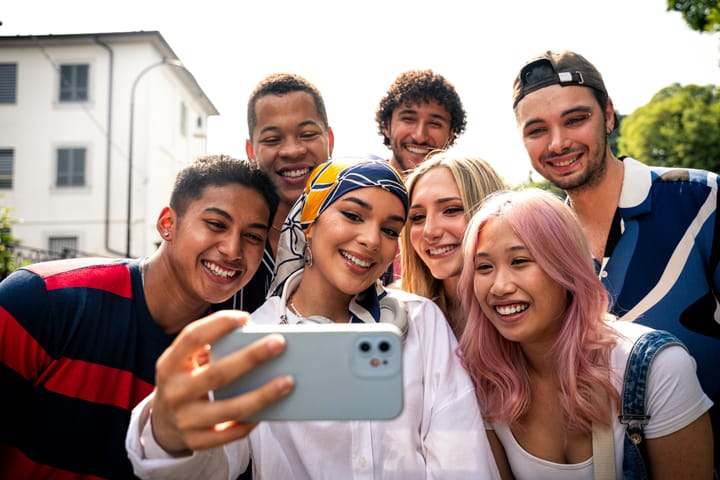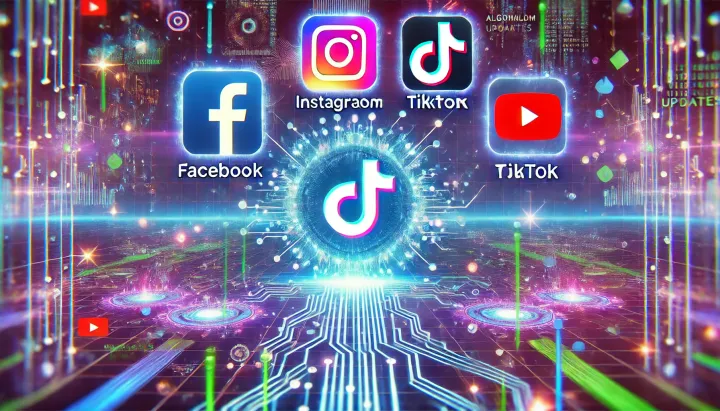Influencer Marketing Trends And Controversies In 2025
Influencer marketing continues to evolve, with brands shifting towards micro and nano influencers, AI-generated personalities, and performance-based collaborations to maximize ROI.

Hello, Bizminds!
Influencer marketing has grown into a multi-billion dollar industry, with brands leveraging influencers to reach highly engaged audiences. However, as the landscape evolves, so do the trends and controversies shaping this dynamic industry. In 2024, new regulations, AI-driven content, and shifting consumer trust are redefining how brands collaborate with influencers.
This article explores the latest influencer marketing trends and controversies impacting the industry, helping brands and marketers navigate this complex but lucrative space.
Influencer Marketing Trends in 2025
1. The Rise of AI-Generated Influencers
One of the biggest trends in 2025 is the rise of AI-generated influencers, such as virtual personalities created through artificial intelligence. These influencers offer brands complete control over messaging, consistency, and audience engagement without the risks associated with human influencers.
Why It Matters:
- AI influencers don’t have personal scandals.
- They can be programmed for 24/7 engagement.
- Brands can customize AI influencers to align with target demographics.
While some audiences embrace AI influencers, others question the authenticity and ethical implications of replacing real content creators.
2. Micro and Nano Influencers Dominate the Market
Brands are shifting away from mega-celebrities and investing more in micro (10K–100K followers) and nano influencers (1K–10K followers). These influencers have higher engagement rates and stronger relationships with their audience, leading to more effective brand collaborations.
Key Benefits:
- Higher engagement rates than macro influencers.
- More affordable partnerships for brands.
- Increased trust and authenticity in sponsored content.
Studies show that nano-influencers generate 60% more engagement than more prominent influencers, making them a valuable asset for niche marketing campaigns.
3. TikTok’s Continued Dominance in Influencer Marketing
TikTok remains the go-to platform for influencer marketing, thanks to its algorithm-driven content discovery and highly engaged user base. Brands are prioritizing short-form video content over traditional social media posts.
What’s Trending on TikTok:
- Short-form educational content.
- Influencer challenges and brand collaborations.
- Unfiltered, authentic content that resonates with Gen Z.
With TikTok’s rise, brands must focus on organic influencer collaborations rather than overly polished advertisements.
4. Subscription-Based Influencer Content
More influencers are adopting subscription-based models (e.g., Patreon, OnlyFans, and Instagram Subscriptions) to offer exclusive content and monetization beyond brand deals.
Why Brands Should Care:
- Subscription communities have highly engaged audiences.
- Influencers can maintain an independent revenue stream, reducing reliance on brand partnerships.
- Brands can access hyper-targeted audiences through paid communities.
This trend highlights the growing influence-to-entrepreneur movement, where creators build revenue streams beyond sponsored content.
5. Performance-Based Influencer Campaigns
Brands are moving away from flat-fee sponsorships and adopting performance-based collaborations, in which influencers are paid based on engagement, conversions, or sales.
Popular Performance-Based Models:
- Affiliate Marketing: Influencers earn commissions for sales driven through unique discount codes.
- Pay-for-Performance: Payment structures based on clicks, leads, or conversions.
- Revenue Sharing: Brands partner with influencers in long-term profit-sharing agreements.
These models create a win-win scenario, ensuring brands get measurable ROI while influencers earn based on actual impact.
Influencer Marketing Controversies in 2025
1. Fake Followers and Engagement Fraud
Despite efforts to combat fraudulent activity, fake followers and engagement manipulation remain significant concerns in the influencer industry.
Common Tactics Used by Fake Influencers:
- Buying followers and likes to appear more influential.
- Using engagement pods to boost comments artificially.
- Misleading brands with fake audience analytics.
Brands now use AI-powered auditing tools like HypeAuditor and Modash to verify influencer authenticity before collaborations.
2. Lack of Transparency in Paid Partnerships
Many influencers fail to adequately disclose sponsored content, violating Federal Trade Commission (FTC) guidelines.
Key Issues:
- Brands and influencers avoid “#ad” or “Sponsored” tags.
- Misleading content where paid promotions appear organic.
- Regulators are increasing the enforcement of non-compliant influencers.
Brands and influencers must prioritize transparent collaborations to maintain audience trust and avoid legal consequences.
3. Ethical Concerns Around AI-Generated Influencers
While AI influencers are trending, they also spark debates about ethics and authenticity.
Major Ethical Questions:
- Should AI influencers be required to disclose they are not real people?
- How do AI influencers impact human creators and job opportunities?
- Can AI personalities genuinely engage with audiences?
Some consumers feel AI influencers lack authenticity, leading to mixed reactions from brands and audiences.
4. “Cancel Culture” and Brand Risks
Influencers are under more scrutiny than ever, and past mistakes or controversial opinions can lead to brands cutting ties.
Recent Controversies Include:
- Influencers are being exposed for past offensive statements.
- Backlash for inauthentic activism or “performative wokeness.”
- Brands facing criticism for supporting problematic influencers.
To mitigate risks, brands must conduct thorough background checks before partnering with influencers and have crisis management plans.
5. Over-saturation and Declining Trust
With so many influencers promoting products, audience skepticism is growing.
Consumer Trust Issues:
- Followers question whether endorsements are genuine or purely for profit.
- Overused sponsorship messages dilute credibility.
- Audiences favor influencers who maintain authenticity and selectivity in brand collaborations.
Brands prioritizing long-term partnerships with influencers (instead of one-off promotions) can build more substantial credibility and trust.
The Conclusion Zone
The influencer marketing industry is evolving rapidly, with AI, micro-influencers, and performance-based deals shaping the future. However, brands must also navigate controversies like transparency issues, engagement fraud, and ethical concerns.
Key Takeaways for Brands & Marketers:
- Work with micro and nano influencers for better engagement.
- Prioritize authenticity—audiences favor accurate, unfiltered content.
- Use AI-powered tools to verify influencer data and audience authenticity.
- Adopt performance-based contracts to maximize ROI.
- Ensure FTC compliance to avoid legal issues.
As influencer marketing grows, brands that adapt to emerging trends while addressing industry controversies will thrive in 2024 and beyond.

